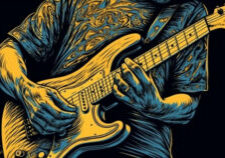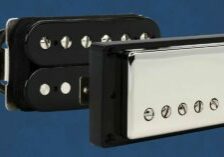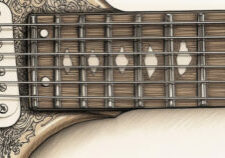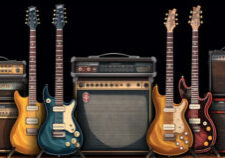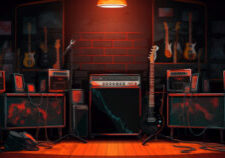Playing a guitar can be a great way to express yourself and let off some steam, but it can be difficult to find the right balance between sound, volume, and tone. That’s where guitar amp power attenuators come in. They are designed to help you control the volume of your amp without sacrificing tone or sound quality.
These devices are an invaluable tool for anyone looking to get the most out of their guitar playing. Plus, they’re relatively easy to set up and use. So, if you’re looking to take your guitar playing to the next level, a power attenuator is a great place to start.
Benefits of Using a Power Attenuator
Experience the joy of playing your favorite tunes at any volume level with a power attenuator! A guitar amp power attenuator is a device that allows a guitar amp to be turned down, without sacrificing too much tone. This is great for situations where you need to reduce the volume of your guitar amp, such as in a studio or in a practice space where you don’t want to disturb your neighbors.
To some degree tone and volume are related so there aren’t many attenuators that 100% keep the same tone, but in many cases, you can dial in the exact sound you want without having to play it at full volume. With a power attenuator, you can even play your amp at bedroom levels with an acceptable loss of tone. So, if you’re looking for the ultimate in convenience and versatility, a power attenuator is the way to go.
Selecting the Right Power Attenuator
Choosing the perfect guitar amp power attenuator can be tricky, but with the right guidance, you’ll be able to dial in your sound in no time.
When choosing a power attenuator, you’ll want to consider the wattage of your amplifier as well as the type of music you’re playing. If you’re playing a style that requires a lot of low-end, you may want to select an attenuator that can handle higher wattages.
Conversely, if you’re playing a style that requires more clarity and presence, you’ll want to choose an attenuator that can handle lower wattages. Additionally, you’ll want to consider the overall size of the attenuator, as larger attenuators will be able to handle higher wattages. However, some players prefer the convenience of a smaller guitar amp power attenuator, as it’s easier to transport and store.
Understanding Wattage and Impedance
Knowing the wattage and impedance of your amplifier is essential in finding the right attenuator for your setup, so don’t skimp on the research! The wattage of an amplifier is the amount of power it can produce. This should be matched with the wattage of the attenuator to ensure the amp is not over-powered and damaged. Impedance is the amount of resistance to current flow that the amplifier can handle. This should be matched to the impedance of the attenuator to ensure the amp isn’t under-powered and that the sound quality is maintained.
The wattage and impedance of the amplifier can usually be found in its user manual or on the manufacturer’s website. Make sure the amplifier wattage and impedance match those of the attenuator, since mismatches can cause damage to either the amplifier or the attenuator.
Select an attenuator that is designed to handle the wattage of the amplifier, since an attenuator that is too weak can cause distortion or clipping of the sound. With the right combination of wattage, impedance, and attenuator design, you can ensure that your amplifier is safely tamed.
Adjusting the Guitar Amp Power Attenuator to Control Volume
Once you’ve found the perfect wattage and impedance match, adjusting your attenuator is the key to controlling the volume of your setup. Attenuators work by converting some of the amp’s power into heat, which is then dissipated through a heat sink. This reduces the amount of power going to the speaker and allows you to get the right volume without having to push the amp too hard.
To adjust the guitar amp power attenuator, you’ll need to experiment with different settings to find the right balance between sound quality and volume. Once you’ve found the right setting, you’ll be able to get the desired volume without sacrificing the sound quality of your amp.
Adding Tone Variations with an Attenuator
Incorporating an attenuator into your setup can add a range of tone variations to your sound, giving you more control over the final product. This can be especially useful if you are playing in a venue where you need to keep your volume low, while still being able to produce a full-bodied sound.
You can use an attenuator to add different levels of distortion to your sound. You can also use the guitar amp power attenuator to adjust the amount of gain, giving you more control over the sound you create. By using the attenuator, you can add a range of tonal variations to your guitar sound, allowing you to create a unique sound that stands out from the crowd.
Frequently Asked Questions
How much does a power attenuator cost?
Power attenuators are devices used to reduce the power output of an amplifier without affecting its tone. These devices are often used in recording studios and live performance settings to help control the sound of a guitar amp. The cost of a power attenuator can vary widely depending on the brand, model, and features. Prices can range from a couple of hundred dollars to several thousand dollars.
What is the difference between a power attenuator and a power attenuator pedal?
A power attenuator is a device used to reduce the output power of an amplifier and make it quieter, while a guitar amp power attenuator pedal is a pedal that can be used with an amplifier to reduce the output and make it quieter. The main difference between the two is that a power attenuator is generally a fixed device, while a power attenuator pedal can be used to adjust the output power of an amplifier. Power attenuators are usually more expensive than power attenuator pedals, but they are typically more effective at reducing sound levels.
What type of amplifier is best suited for a power attenuator?
Power attenuators are devices that are used to reduce the output power of an amplifier. In general, any amplifier can be used with a guitar amp power attenuator, however, some amplifiers are better suited for power attenuators than others. Specifically, tube amplifiers, which are known for their ability to produce high amounts of power, are the best choice for use with power attenuators, as they are the most efficient type of amplifier for this purpose. Additionally, tube amplifiers produce a warm, rich sound that is ideal for power attenuator use.
Are power attenuators safe to use?
Power attenuators are devices that allow guitar amplifiers to be played at lower volumes while still maintaining the same sound quality. While they can be useful in certain situations, they may not be safe to use in all cases. Attenuators can cause thermal buildup in the amplifier, resulting in potential damage to the amp and speaker system. Furthermore, they also reduce the dampening factor of the speaker, meaning that sound waves can travel further than intended and cause unwanted noise in nearby spaces. Ultimately, it is important to be cautious when using guitar amp power attenuators and to ensure the amplifier is suitable for their use.
Is it necessary to have a guitar amp power attenuator in order to get the desired sound?
A power attenuator is not necessary in order to get the desired sound. In fact, many guitarists find that using a guitar amp power attenuator can make their sound more muddy and distorted. They can also be quite expensive and require extensive knowledge of electricity and wiring to install. Ultimately, it is up to the individual musician to decide if they want to use a power attenuator or not.
Conclusion
Using a guitar amp power can be a great way to control volume and tone. When selecting and setting up an attenuator, it’s important to understand wattage and impedance, as well as how to adjust the device to get the sound you want. With the right attenuator and a few tweaks, you can turn your guitar amp up to eleven without having to worry about disturbing the neighbors. Plus, you’ll have more control over your tone and volume than ever before. So don’t be afraid to give it a try – you won’t regret it!

